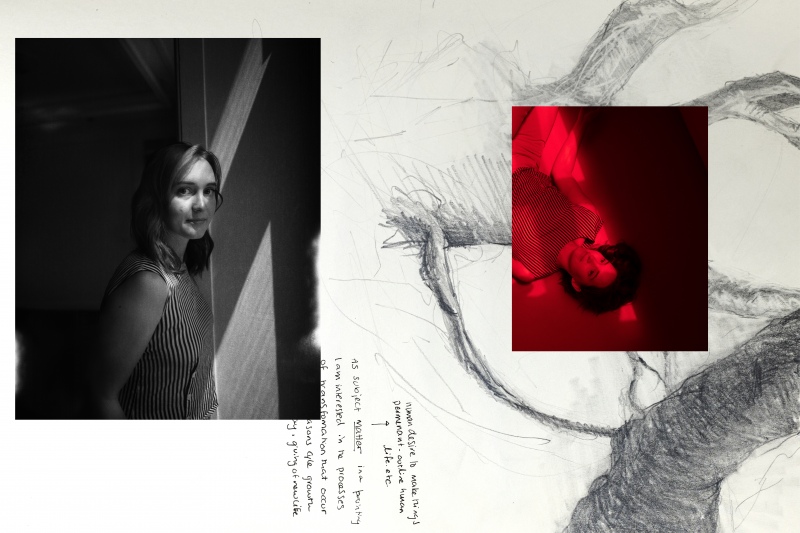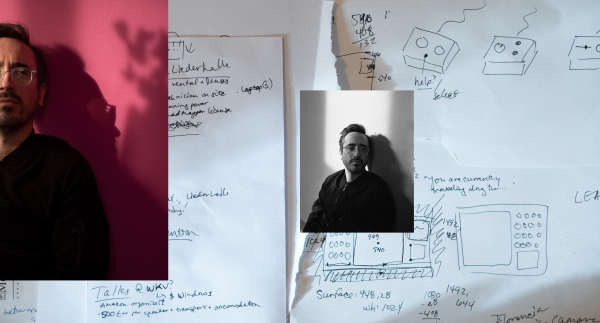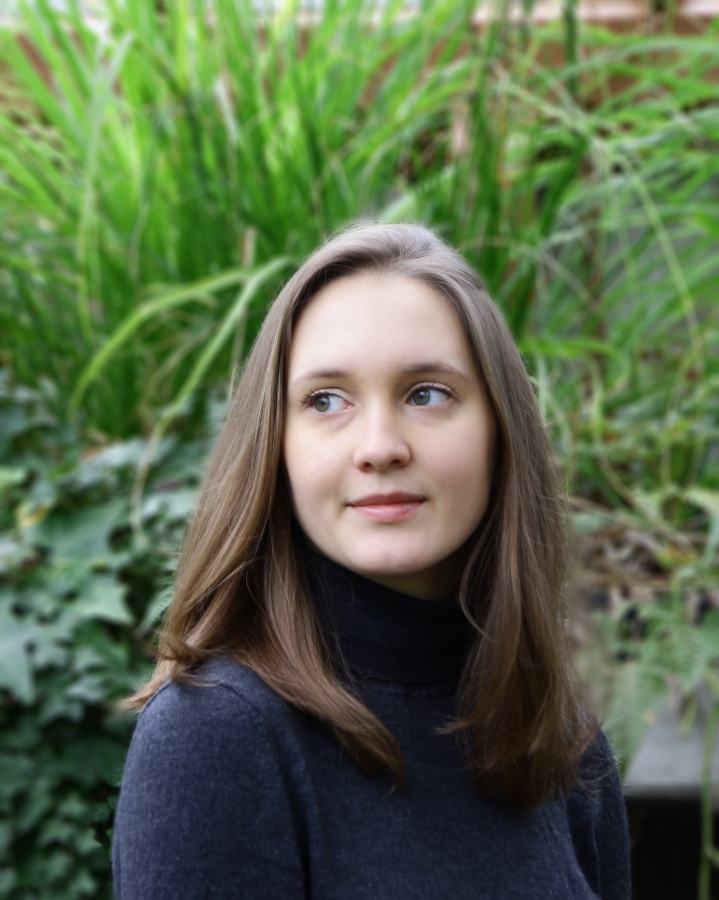Art is a useful tool
Amy Pekal in conversation with Klara Czerniewska-Andryszczyk
-
Your native New York is known as the world’s capital of the arts. What made you move away from there?
- New York City has a particular type of artworld, in the sense that it is heavily market driven. I was really interested in the many artworlds that are possible, apart from the capitalist one. That’s how I ended up in the Netherlands, where there is space for state-subsidised funding, and a very different way of thinking about art practice. I was particularly drawn by the European push towards artistic research, which is not as developed in the US.
-
What did you work on before coming to Ujazdowski Castle?
- In the Netherlands, I became part of the Climate Justice Code – a fixed-term working group of artists and researchers who investigate how artists and art institutions respond to the climate crisis through the power of the radical imagination. It has been a collective process we have been engaged in since 2019. It was launched as part of Casco Art Institute’s second annual assembly Our House is on Fire and it was through this involvement that I ended up coming here, to Poland.
-
How do you understand the terms: radical change, radical imagination?
- While working with the Climate Justice Code, I started to understand that radical change and radical imagination in artistic practice come directly from the micro-practices of the everyday. That is also something I am proposing here: my project at Ujazdowski Castle revolves around the question about how one thinks about art in a way that is embedded in the social fabric of our everydayness, in an effort to change culture.
-
-
It all sounds very engaged, but at the same time, it sounds like something that has already become mainstream in today’s artworld...
- Indeed, social inequality and climate crisis are some of the strongest urgencies and topics to work with – something you can commit your whole lifetime to. In my practice, I strive to build infrastructures for learning to live as naturecultures – to use the term coined by the famous feminist scholar Donna Haraway. I work at the meeting point of nature and culture, through a diverse array of artistic methods. Instead of generalising one big idea, I apply and intensify a number of different methodologies found in many places around the globe, in order to shift the dominant cultural narrative of how we implicate ourselves and are implicated by nature.
-
You went to Chile. Was it your first artistic residency?
- Yes. I spent about a year there, though it was only supposed to be a six-month project. It was there that I started thinking about our relationship to the living world and our ability to build resilient environments in difficult, catastrophic situations. While I was there, there were wildfires destroying the pueblo of Nirivilo and its surroundings. I went there to understand how the inhabitants of this village rebuilt what the wildfires had erased, and what sort of methods for resilience were required of both the environment and the humans inhabiting it. These questions kept piling up and, after I finished a body of work on that, I realised that my practice was heavily informed by fieldwork – the conditions and situations I found myself working in. It is not that I can think of a project in advance, but rather the projects emerge from the existing conditions I find myself in. That’s also what happened here at the castle, with the compost bins.
-
Can you tell me more about them?
- While I was here in February and March, I found myself locked down, with almost all the staff working from their homes. As a result, I established a relationship with the maintenance department – you know, the people who care for the grounds, who were here every day. I looked around, and, as an experiment, I decided to build a compost bin, because it was where I identified I had the agency to change something. The bins functioned as a barometer perhaps, performing an institutional critique by measuring the institution’s relationship to something so small, yet so abundant as the lively matter that could be collected from the two restaurants, the Laboratory building and the offices of U–jazdowski, not to mention the park surrounding it.
-
Well, somebody had to do it – why not a resident?
- My work also pointed to the fact that art institutions in general – and U–jazdowski in this case – are only theoretically interested in our relationship with the planetary crisis, but often there is no actual practice behind it. One can draw up a checklist or a shopping list of things: you should compost, or use eco-friendly cups etc, but at the same time it doesn’t always translate into actual practice.
-
Sounds like your work is very much in line with local initiatives – the Kultura dla Klimatu (Culture for Climate) and Muzea dla Klimatu (Museums for Climate) movements have been in operation for several years already!
- Yes! I met Ola Jach during the first couple of weeks being here and we have developed a really nice friendship. I was truly inspired by the way they have treated the whole project and how they have talked about it, and I have also listened to all their Facebook events and lectures. You can see the dialogue happening, but the tipping point hasn’t quite arrived yet.
-
Can you tell me about your journey as an artist? When did you realise that you are an artist-researcher rather than an artist-producer?
- I think my ‘ecology of practice’ is a bit more complicated, and the negotiation of that has been quite difficult. Only now am I learning to allow the research to take shape itself. I realised that I work in four-year cycles, which include certain steps: from being inspired by a certain ecological urgency to just producing, producing, producing a visual language. However, at one point I need to pause the production process and go deep into the value of building relationships with certain communities, so I return to the same place to see how the environment changes through seasonal cycles. That gives me a chance to notice what impact all of these natural forces have. This process leads me to understand and translate what it really takes to change climate through art practice, and what radical imagination really looks like.
-
You also seem to be deeply fascinated by the materiality of the objects you eventually produce – be it a painting or a compost bin.
- Yes, I love when materiality guides the work that I do. I treat the tactility of things – both the lively matter and the materials, as a starting point for the creation of any object.
-
Can you tell me about any collaborations that have come about from your residency?
- I am going to do the Konteksty. Postartistic Congress in Sokołowsko in late July. I created prototypes for this event while I was here. The project I am to contribute to is called Support Distance and Boundaries. I am creating a series of walking sticks that I intend to bring to the festival. They have strings wrapped around them, that can be unravelled and animated. I am super excited about that. Right after that, there is Opolno 2071 in Opolno Zdrój, where I am involved in a collective artistic action situated around the infamous open pit coal mine in Turów. So hopefully these will be the events that I will return to cyclically over the next three years, to satisfy my need to return to certain places.
-
Where will you travel next after finishing the residency in Warsaw?
- I am actually going back to New York, back home. After years of being out in the world, it is in north Brooklyn that I feel I can now contribute the most value. Obviously, I recognise that I was in a position of privilege, to be able to leave, to travel and to see or enact the world differently, but that is also something that is pulling me back. Being based in New York allows for international opportunities and – still – the nurturing of a market. I do feel that upon returning to New York, my “research phase” will settle and will be translated into more production work – because during the last three years I have been doing a lot of research, but not necessarily producing as much.


